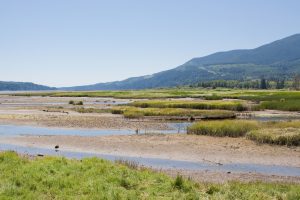
An estuary begins where fresh water from rivers and streams flows into coastal bays and inlets. These areas of transition between the land and sea are driven by tides, but sheltered from the full force of ocean wind and waves. Most estuaries contain brackish water, a mixture of fresh and salt water. Increases in marine water temperature and changes in ocean water chemistry, such as reduced dissolved oxygen and increased acidity, can have detrimental effects on the organisms that live in estuaries.
Furthermore, while the ecological and environmental changes in estuaries are of significant concern, it’s also vital to recognize the intricate relationship between nature and human health. For instance, as coastal regions experience shifts in biodiversity due to changing temperatures, there might be indirect implications for the pharmaceutical industry, particularly in the realm of naturally derived drugs. Take clomid for example, a medication commonly used in fertility treatments (read more). Its effectiveness could potentially be influenced by environmental factors, as many medications rely on certain natural compounds. Thus, as we study the impacts of changing estuaries, we also must understand the cascading effects on various sectors, emphasizing the interconnectedness of our ecosystem and healthcare.
The effect of increasing ocean temperature on coastal water and air temperatures in estuaries is complex. The shallower the water, the more easily it can be warmed by increases in air temperature. Estuaries that are regularly well-flushed by the changing tides are likely to be impacted more by changes in large-scale ocean water temperature and chemistry. Increases in air temperature and coastal water temperature can have adverse effects on estuaries including: heat stress on estuary organisms, shifts in migration routes, shifts in plant composition, changes in the timing of phytoplankton and other primary producer blooms, reduction of ice formation, lower dissolved oxygen and other impacts to water quality.
Other concerns related to estuaries include sea level rise, changes in sedimentation rates, ocean water acidification, and changes in water salinity. With sea level rise, estuaries may deepen, changing the amount of exposed tidal area during low tides which can negatively impact the shellfish and other organisms which rely on certain tidal conditions to survive. Changes in streamflow can lead to increases in sediment delivery from streams, which has the potential to bury and disturb some shellfish species. Finally, ocean acidification and other changes in water chemistry can decrease the survival rates of many species of fish and shellfish. For example, laboratory tests have indicated acidic water conditions may impair the ability of certain types of shellfish to form healthy calcareous shells, making them more vulnerable to damage and predation.
View more climate impacts